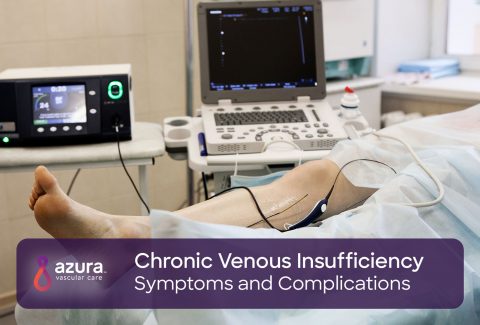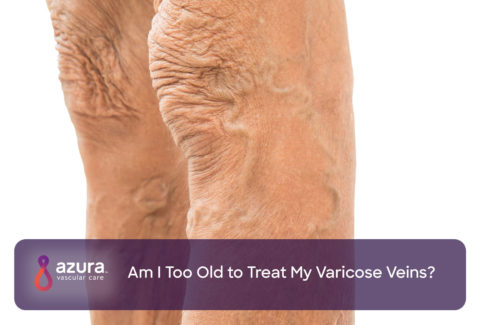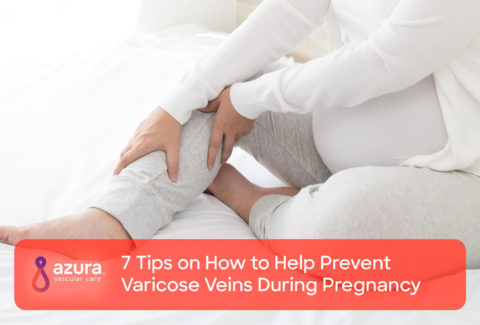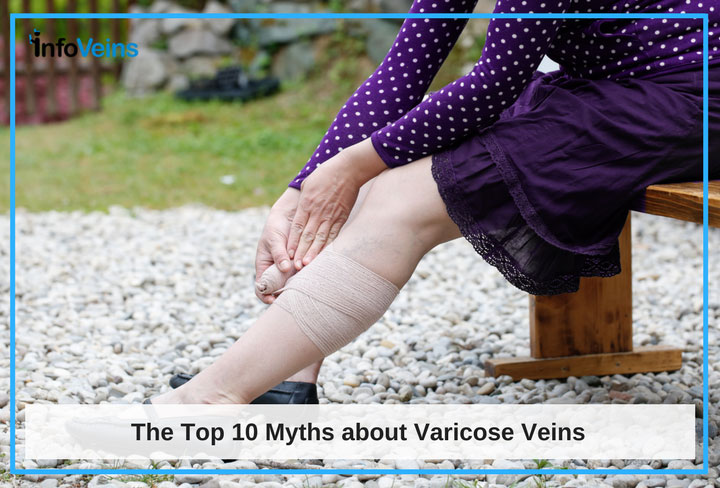
If you’ve recently been diagnosed with varicose veins, you’re probably trying to sort out the facts from the fiction. In fact, it probably seems like everyone in your life suddenly has an opinion about who gets varicose veins, why they get them and what they can do about them.
What Exactly Are Varicose Veins?
Varicose veins are blue, bulging and twisted veins that can be seen and felt under the surface of your skin. They are caused by leaky valves and weakened walls of the veins. It’s important to understand that, contrary to popular belief, they’re not always “just cosmetic” – they can cause health issues and it’s important for you to learn the truth about the myths that surround varicose veins.
10 Myths about Varicose Veins
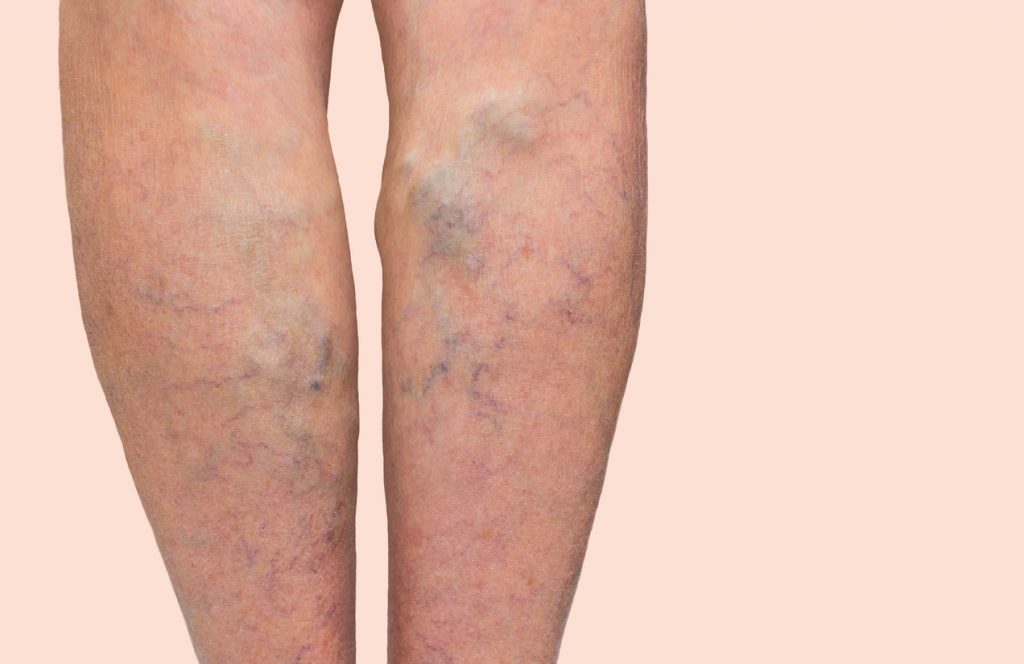
MYTH #1: Varicose veins are only cosmetic
Of course, there is a cosmetic component to varicose veins. Most of the time, they can be seen on your legs, and they may make it uncomfortable for you to wear shorts or skirts. Spider veins, contrarily, are a smaller version of varicose veins that are purely cosmetic. Varicose veins can have a significant impact on your health and how much you enjoy your life. Varicose veins may:
- be uncomfortable or painful
- cause swelling
- lead to changes in the color of your skin, or cause it to get thicker
- increase your risk of blood clots
- bleed a lot when injured
MYTH #2: Only women get varicose veins
Close to a third of all adults have varicose veins. While it’s true they do occur more commonly in women, men can have varicose veins as well.
MYTH #3: Varicose veins are an elderly person’s problem
The risk of developing varicose veins does increase with age, but even young adults can develop them.
MYTH #4: Nothing can be done to treat varicose veins
The truth is, you have many varicose vein treatment options, from changing your habits to surgery, to minimally invasive non-surgical options. And, there may be things you can do, starting right now, to lessen your varicose vein symptoms. For some people affected with varicose veins, the following have been found helpful in reducing their symptoms:
- elevating the feet to the level of the heart for 30 minutes, 4 times a day, which may decrease pressure in the veins
- for some people who are overweight, losing weight may do more than just benefit their legs – it can also improve overall health
- regular physical activity means muscles are moving, which can keep blood moving and may improve symptoms ii
You should ask your doctor about other options.
MYTH #5: Surgery is the only treatment option for varicose veins
If your grandmother had varicose veins, surgery was the only option for her. But now, there are minimally invasive varicose veins treatment options available for those who wish to treat their varicose veins. Yes, surgery is still an option and may be preferred in certain situations, but there are several minimally invasive approaches available:
- Sclerotherapy – A sclerosing, or scarring, agent is mixed with air and injected into the vein. This closes off the vein and redirects the blood flow away from the varicose veins.
- Endovenous ablation – This uses heat to destroy the vein from the inside and then redirects blood towards other, healthier veins.
- Microphlebectomy – Several small incisions, 2 – 3 mm or about 1/10 of an inch, are made in the skin to remove superficial veins. This is often performed along with an endovenous treatment. i
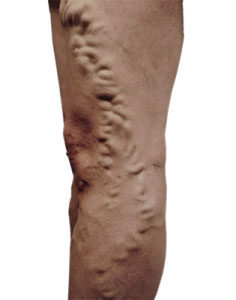
Before Treatment
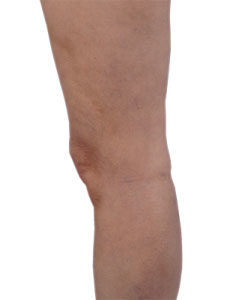
After Treatment
MYTH #6: Treatment for varicose veins is painful
The traditional surgery for varicose veins can involve a painful recovery, but many patients report healing faster and with less pain after undergoing a minimally invasive treatment. iii
MYTH #7: Treatments are only for cosmetic purposes
It’s true that treatments currently available will likely improve the appearance of your legs, but your other symptoms, including discomfort, heaviness, and swelling, often get better with treatment as well. ii
MYTH #8: The veins will always come back after treatment
Varicose veins will not always come back after treatment. The risk of them returning is somewhat higher after surgery, but the minimally invasive techniques available today actually have a lower risk of reoccurrence. ii
MYTH #9: Insurance does not pay for varicose vein treatment
This may or may not be true, depending on your plan and coverage. You should contact your health insurance provider to see if treatments for varicose veins are covered. Many insurance plans cover treatment if you’re experiencing pain, swelling or bleeding. iv
MYTH #10: Women need to wait until after having children to seek treatment
Even if you’re in the family-planning stage of life, you can have varicose vein treatments between pregnancies. v
Now that these varicose vein myths have been debunked, you may be interested in further exploring your options for treatment. And if you think you have varicose veins, but haven’t yet talked with your doctor, make an appointment today.
If you’ve been diagnosed with varicose veins and have pain or discomfort and you’re interested in looking into how you can get relief, make an appointment with an Interventional Radiologist who specializes in the treatment of varicose veins today to discuss your options.
Sources:
i Lin, F., Zhang, S., Sun, Y., Ren, S., Liu, P., The Management of Varicose Veins. Int Surg, 2015. 100: p. 185-189. https://www.ncbi.nlm.nih.gov/pmc/articles/PMC4301287/
ii Piazza, G., Varicose Veins. Circulation, 2014. 130: p. 582-587. http://circ.ahajournals.org/content/130/7/582.long
iii Spinedi, L., Uthoff, H., Partovi, S., Staub, D. Varicosities of the lower extremity, new approaches: cosmetic or therapeutic needs? Swiss Med Wkly, 2016. 146:214360 http://www.smw.ch/scripts/stream_pdf.php?doi=smw-2016-14360
iv Society of Interventional Radiology, Varicose Veins and Venous Insufficiency http://www.sirweb.org/patients/varicose-veins/ (accessed 12/3/2016)
v Varicose Veins in the Legs: The Diagnosis and Management of Varicose Veins. NICE Clinical Guidelines, No. 168. National Clinical Guideline Centre (UK). London: National Institute for Health and Care Excellence (UK); 2013 Jul. https://www.ncbi.nlm.nih.gov/pubmedhealth/PMH0080333/
